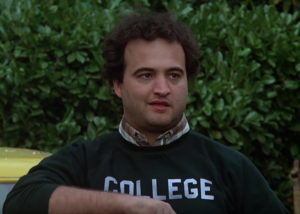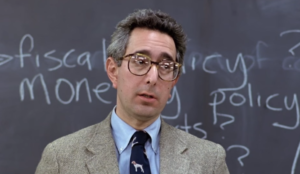Every so often I have a truly gifted student in my class that comes to me to discuss getting their Ph.D. They are hesitant because of the lack of knowledge surrounding what a doctoral program is like, how long it takes, and what it costs.
Graduate school has this scary connotation. It must be expensive and probably takes a long time. Many students do not even consider continuing past their bachelor’s degree because of these rumors. I want to set the record straight and explain how this is not always the case by sharing with you what I learned as I procured my Ph.D. for free. Well, that’s not entirely true. Not only did I get the education for free, but the school also paid me a salary while I was there. So really I was paid to get my Ph.D., and that is not at all uncommon.

Grad school is expensive, but only if you are the one paying
Master’s degrees are pricey. The cost to provide each credit hour of graduate coursework is more costly for the university than for an undergraduate course. The university then passes these costs onto the master’s students.
The graduate courses cannot be pawned off on another grad student like many undergraduate courses, so a professor with a much higher salary must teach the class. Also, the professors are paid more to teach a graduate class, and the class sizes are smaller, reducing the economies of scale.
For example, my last year as a doctoral student, I was teaching over 150 students a semester and only making $25,000. The ROI on those courses for the university was huge. This return would not be as high if the university had to pay a full-time professor.
This ROI is what makes a doctoral program different from a master’s program.
Master’s students offer very little value to the university. First off, the programs are usually short. Almost every master of finance or master of accounting program is only one year long (really ten months because of summer). This short timeframe does not give enough time for the university to incorporate these students as instructors and, more importantly, these students don’t want to teach. They are going on to be analysts or associates, the complete opposite of academia.
Doctoral students, however, are around for 4-6 years and need experience teaching before they graduate. Why not pay them? It’s cheap labor for the university, and the student gets to boost their resume with teaching experience. Quality business Ph.D. programs pay their students a stipend throughout the doctoral program and also cover their tuition.
The stipend is not huge, but a quick google search of state universities shows a range of $15,000-$35,000 per year. Plenty to live on, especially since free time is consumed reading journal articles and trying to figure out how calculus is used to find the value of a stock option.
Its only two years of school
Finance doctoral programs can last for many years. On average around five years. But, students only take classes for two years. After the first two years, students take their comprehensive, or qualifying, exams. The exam from Hell. By this point, students are expected to have the financial knowledge necessary to teach finance to others. To become “academically qualified,” another academic term, students have to pass their comps. In my case, these were two days of 6-hour exams.
My Comprehensive Exams
The first day of my comps focused on Asset Pricing and the next day on Corporate Finance. The exams were open-ended questions from each of the professors who taught me over the prior two years. The questions could be specific and related to deriving an equation or something as broad as “Summarize financial research in the past 20 years.” My question was a blend.
One half of my asset pricing comp consisted of one question. Three hours allotted to “Summarizing the research around higher moments of stock returns.” Higher moments are things like volatility, skewness, and kurtosis. Not a fun topic to discuss for three hours. There were maybe 4 or 5 papers that covered this topic throughout the entire semester and I needed to write 8-10 pages on what they were and how they were related. I spent a lot of time staring at the blinking cursor on the testing center’s word processor but eventually made it through.
Walking into the exam I had to know everything. I needed to be prepared to give a one sentence or 10-page explanation of anything in finance.
To make matters more nerve-wracking, all the faculty get to grade the exam, and they take their sweet time. So if I answered a question like someone who was sitting in their first finance course, everyone knew it. Thankfully I didn’t receive any disappointing head shakes in the halls the next week. But it took a few weeks to get the results.
Once I received the passing email, I was done. To this day I don’t know what my score was or which questions I got wrong, all I know is that I passed. This meant I never had to sit in another finance course again. From that day forward, I was in front of the class and just the dissertation stood between me and a Ph.D.
The Dissertation
This was the most exciting part of the whole program, but also the most stressful. I had the opportunity to write on any topic I wanted and research a question no one has answered. I wrote about cash holdings and executive compensation with a focus on bargaining and agency issues. The dissertation was a multi-stage process. After selecting a committee of professors, I presented them with my idea and preliminary results. After their approval, I then wrote and taught until I was finished with the paper, the same thing I would do as a professor once I graduated.

I collected my modest stipend and the “tuition” was paid for by the university. Yes, I was still charged tuition even though I was no longer taking any classes. The tuition was for the dissertation guidance. When my dissertation was complete, I would defend my dissertation before the same committee and get their approval along with a bunch of signatures needed to graduate.
Earning your Pay: Being a TA and RA
The whole path to a Ph.D. sounds like a luxurious, albeit stressful, ride to Doctor-dom with some classes in between. However, there are a lot of other things that eat up a doctoral student’s time. The work that no one wants to do but falls into the laps of doctoral students. This isn’t necessarily a problem; it’s part of the job. That’s what you are there to do; you start at the bottom. The very bottom.
For example, I spent the better part of a week reading through 10-k’s (annual financial statements on the SEC’s EDGAR data
base) looking for details related to recent litigation and insurance coverage. Not fun or interesting stuff. All this for a statistical test that may or may not work.
Another time I spent a few days downloading data from a Bloomberg terminal, only to find out that the data had a bias issue and was unusable. This is the Research Assistant or RA component of the job. Students help professors publish papers and learn how the process works along the way. Thankfully I had a great dissertation chair that didn’t treat me like a slave and made sure that I had the tools needed to be successful once I graduated.
From a teaching standpoint, not only did I teach my classes, but I proctored exams and held office hours for other classes as a Teaching Assistant (TA). Proctoring exams consisted of monitoring a classroom for cheating for two-hours. Just walking around desks, being completely unproductive. Oh and of course collecting and sorting scantrons once the exams were complete.
Pro tip from many hours staring at people take tests, cheaters look at you before or after they cheat. If I thought someone might be glancing at someone else’s paper, it was a dead give away when they would look up and stare back at me after.

The RA role took up the most time but was educational. TA work was a complete time suck. However, this paid this bills while I was in school and there was a lot I learned from the most mundane tasks of research and teaching.
Now, here I am
When I graduated, a huge weight was lifted off my shoulder. Being called Dr. S is still a weird feeling, but its growing on me. The grad school weight was quickly replaced by the pressure of tenure, which is a whole other can of worms. I love being a finance professor and couldn’t imagine doing anything else. I get to teach others about finance and use my research to explore the uncharted territories of an ancient subject. To top it all off, I didn’t spend a dime to get here.
image credit: youtube: animal house 1, animal house 2, Ferris Bueller’s day off
I see a lot of Ph.D students at my University as the ones who are teaching the undergrads (in classes after lectures) which helps them supplement the costs. I think its great you managed to in affect get paid to be educated. I’m currently looking to doing a masters in management after my undergrad degree in Economics is finished, but it would cost me a lot and from my research there isn’t much funding I’d get (Ph.D’s are much more liable for funding support than MSc’s). Regardless it’s only an extra 10 months of education I’d need to help finance which I can manage and would be well worth it in the long run. Good article!
Best of luck in grad school! Plenty of other ways to supplement income during those 10 months. Tutoring undergrads is a perfect example.